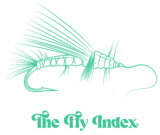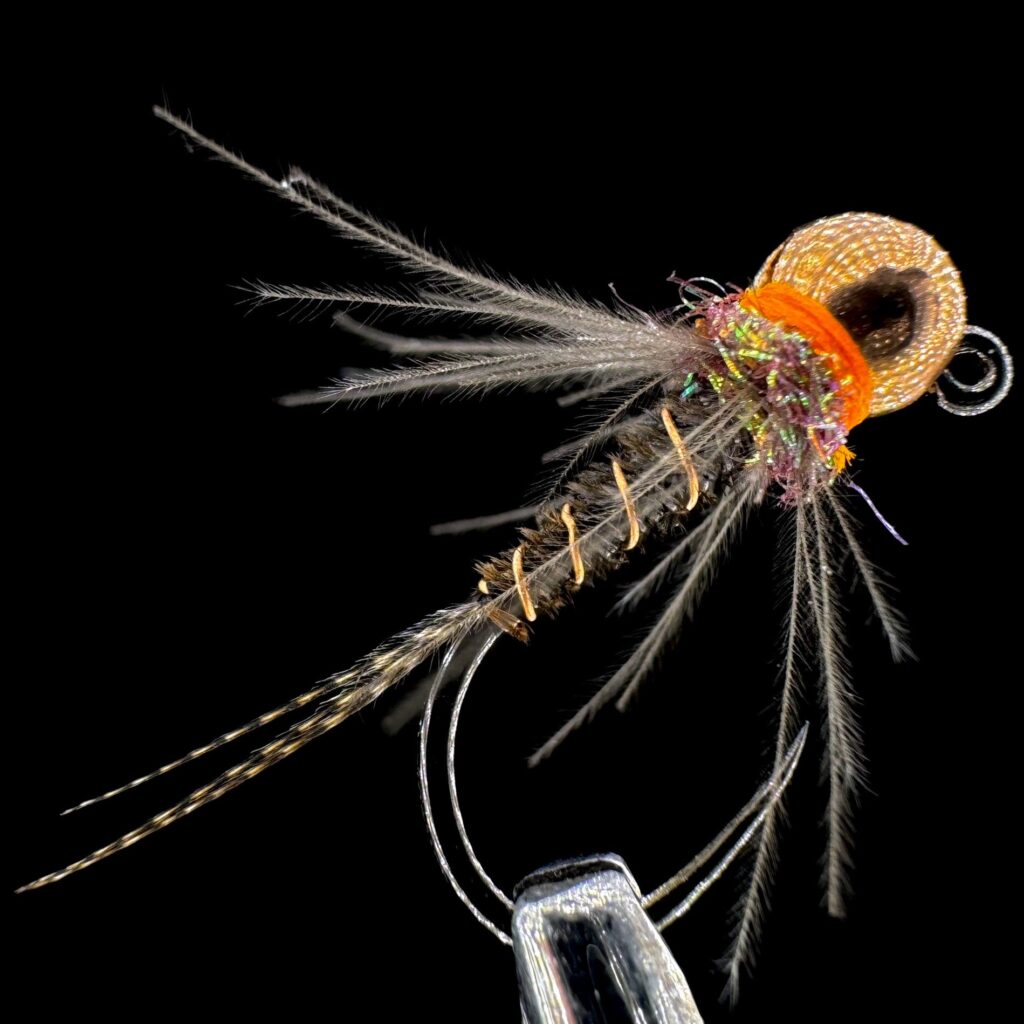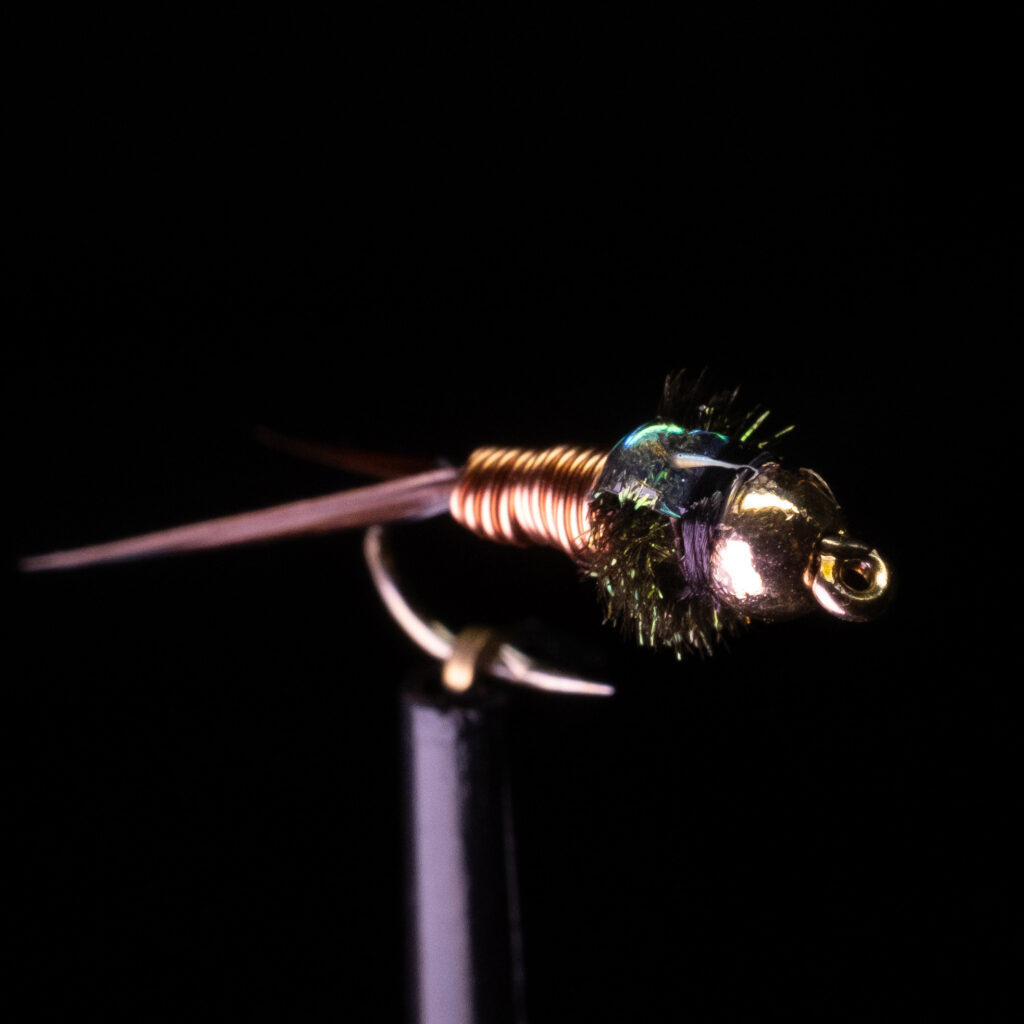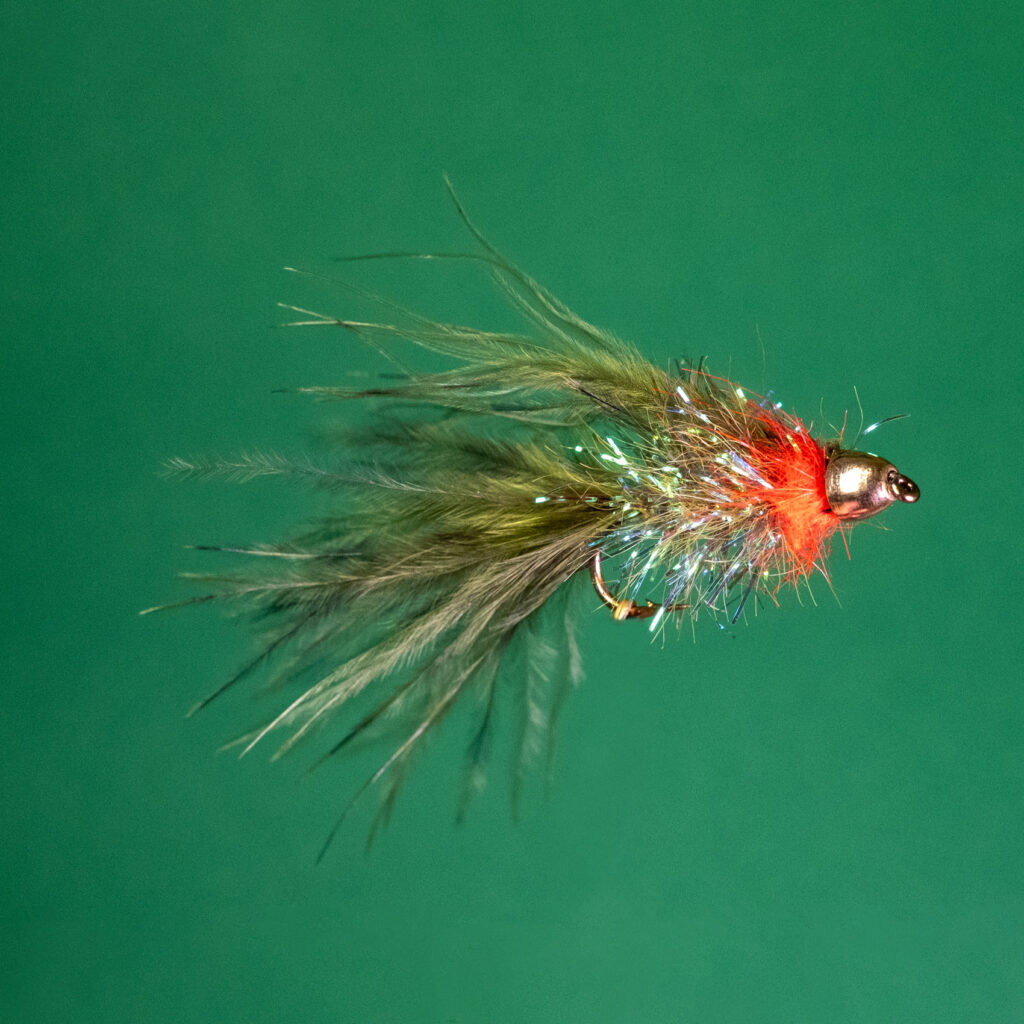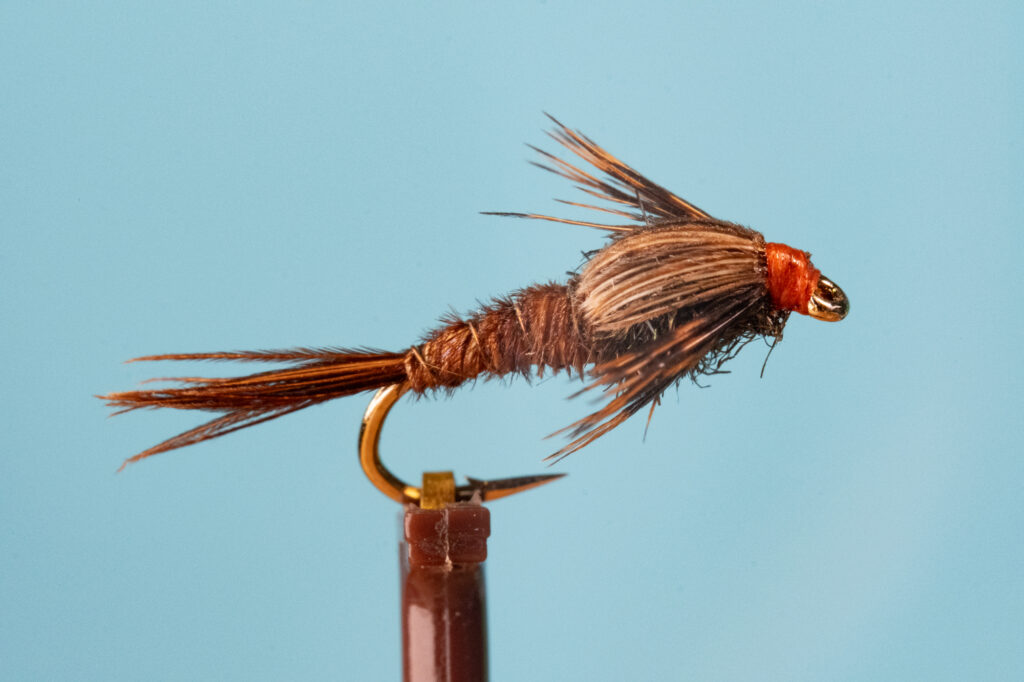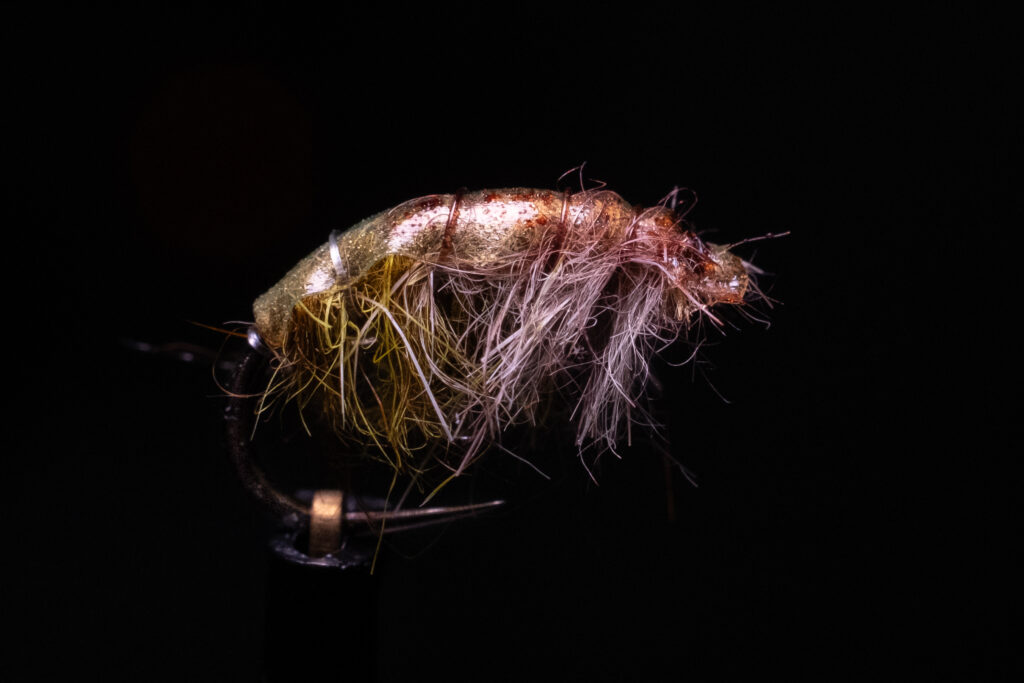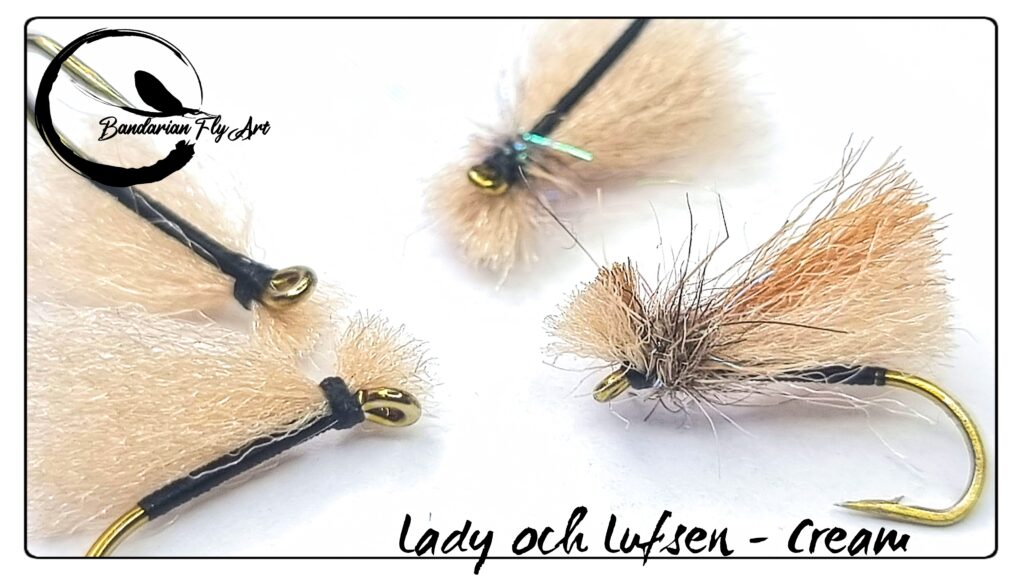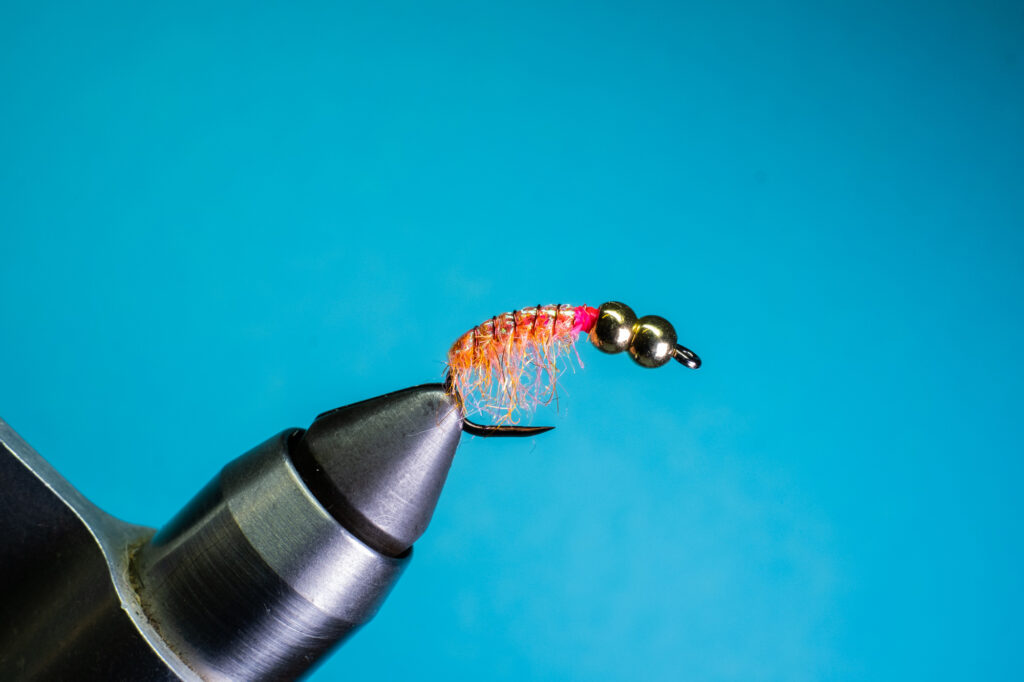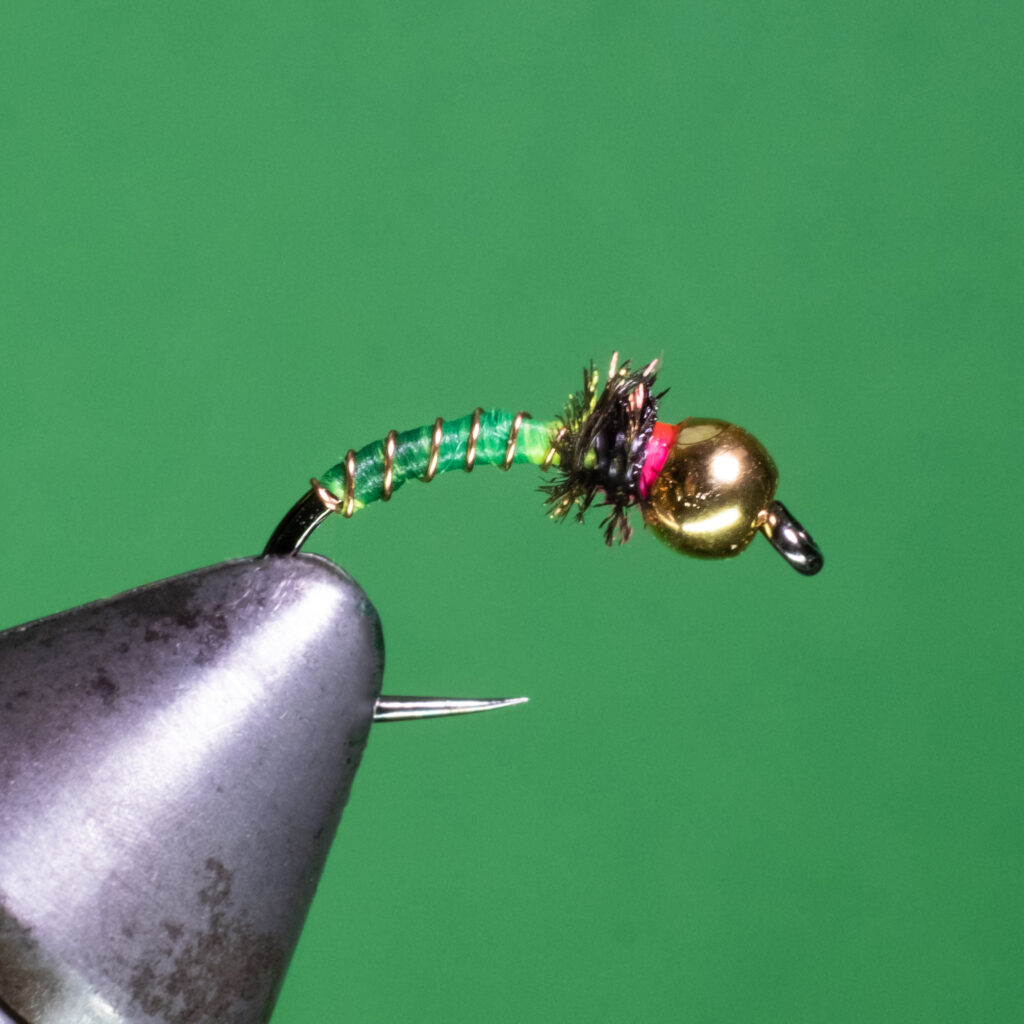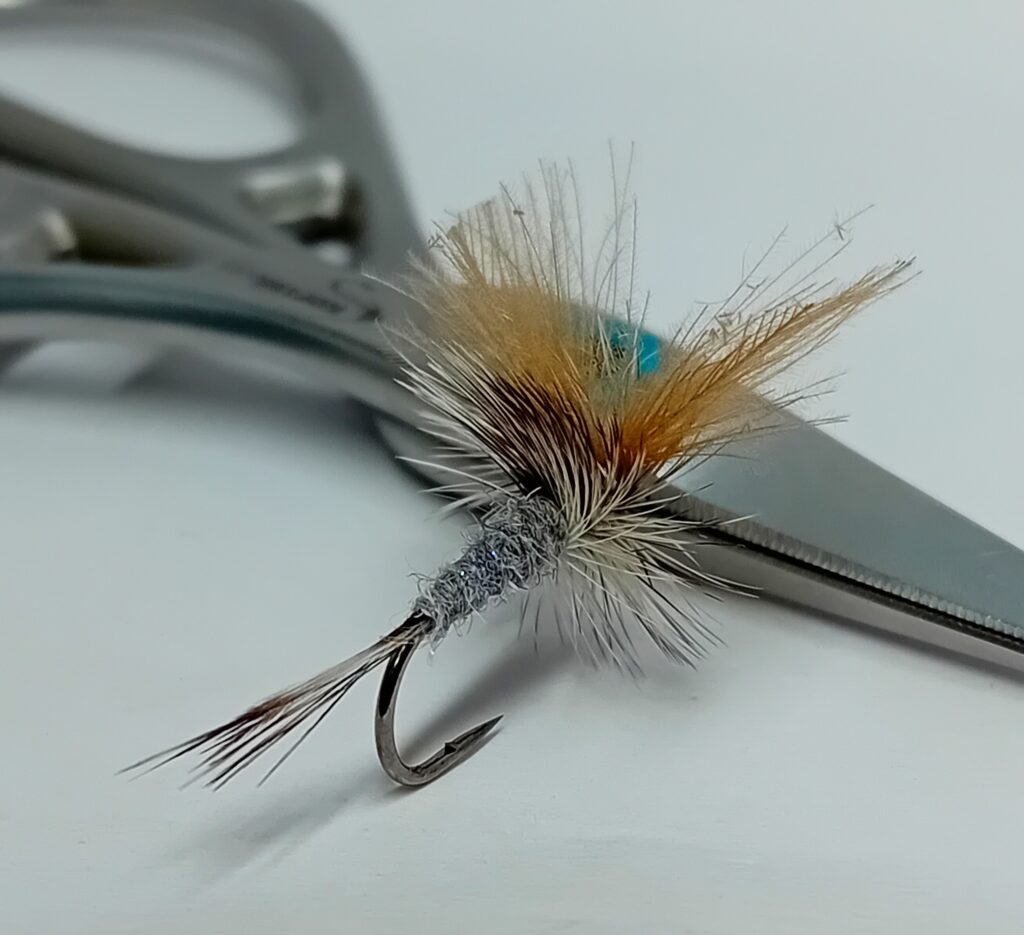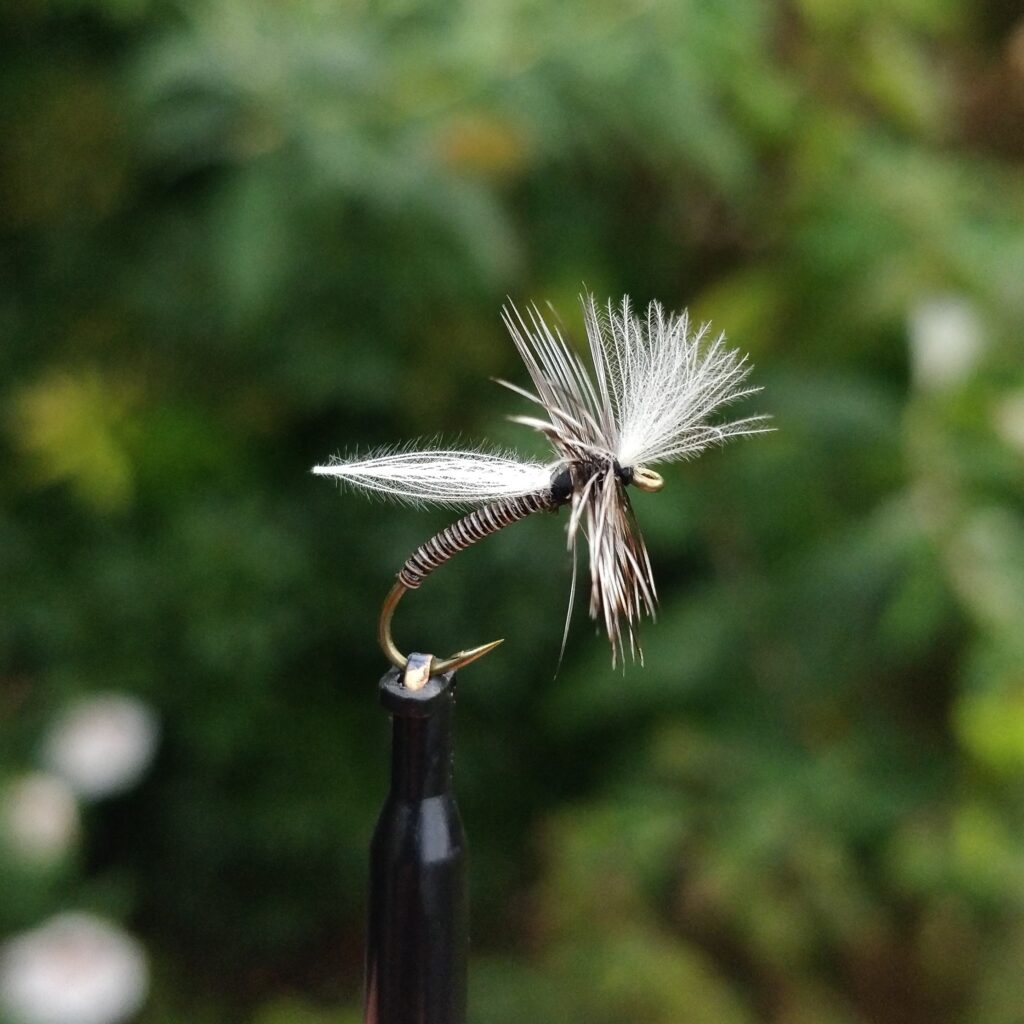Hotspot Pheasant Tail Nymph
This wonderfully creative variation of the classic Pheasant Tail Nymph was tied by Jan Wittner, based in Prague. Using a barbless jig hook and an oversized bead, this would be a great fly for fishing deep pools, especially with that orange hotspot! Check out more of Jan’s flies on his Instagram account: @jwflytying
Hotspot Pheasant Tail Nymph Read More »
